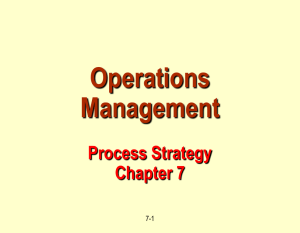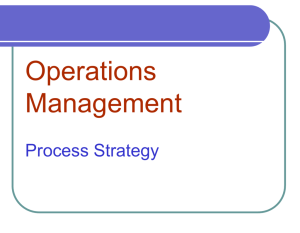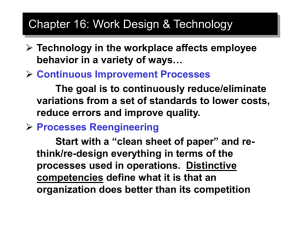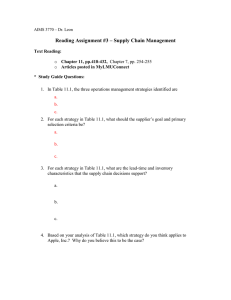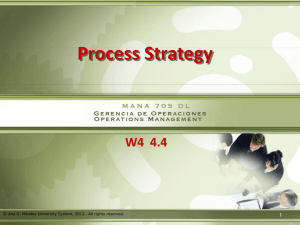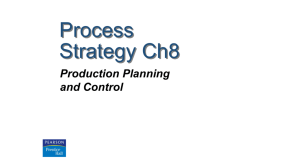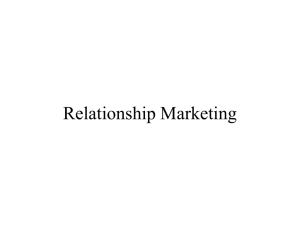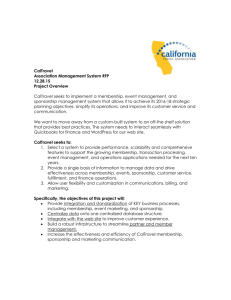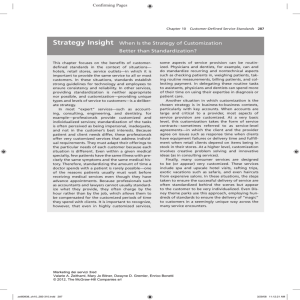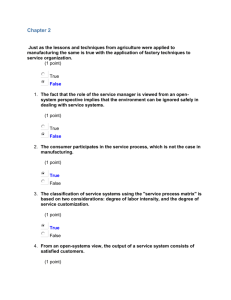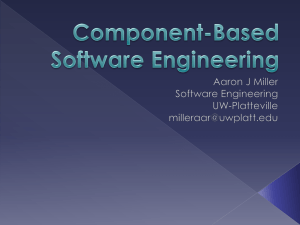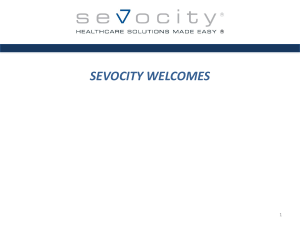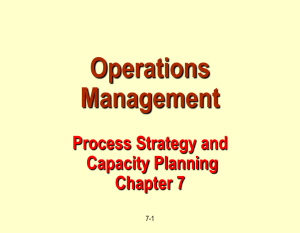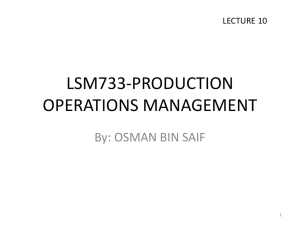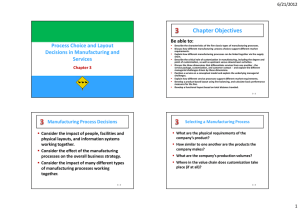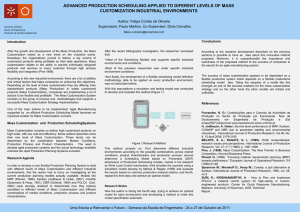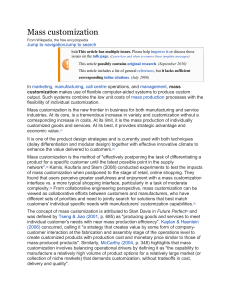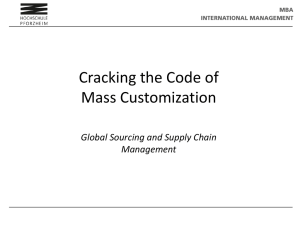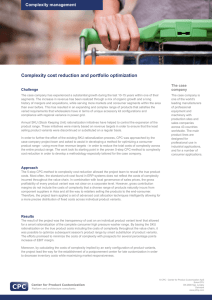CBA 390 (H/R) PROCESS STRATEGY – Ch 7
advertisement
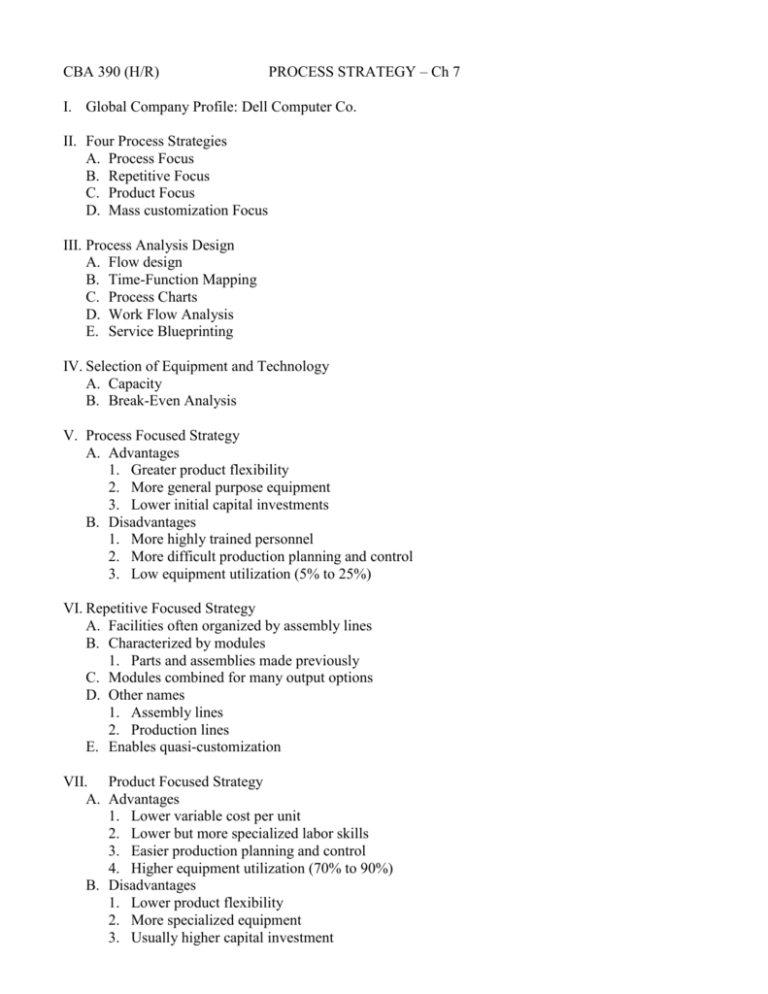
CBA 390 (H/R) PROCESS STRATEGY – Ch 7 I. Global Company Profile: Dell Computer Co. II. Four Process Strategies A. Process Focus B. Repetitive Focus C. Product Focus D. Mass customization Focus III. Process Analysis Design A. Flow design B. Time-Function Mapping C. Process Charts D. Work Flow Analysis E. Service Blueprinting IV. Selection of Equipment and Technology A. Capacity B. Break-Even Analysis V. Process Focused Strategy A. Advantages 1. Greater product flexibility 2. More general purpose equipment 3. Lower initial capital investments B. Disadvantages 1. More highly trained personnel 2. More difficult production planning and control 3. Low equipment utilization (5% to 25%) VI. Repetitive Focused Strategy A. Facilities often organized by assembly lines B. Characterized by modules 1. Parts and assemblies made previously C. Modules combined for many output options D. Other names 1. Assembly lines 2. Production lines E. Enables quasi-customization VII. Product Focused Strategy A. Advantages 1. Lower variable cost per unit 2. Lower but more specialized labor skills 3. Easier production planning and control 4. Higher equipment utilization (70% to 90%) B. Disadvantages 1. Lower product flexibility 2. More specialized equipment 3. Usually higher capital investment VIII. Mass Customization A. Using technology and imagination to rapidly mass-produce products that cater to sundry unique customer desires. B. Under mass customization the three process models become so flexible that distinctions between them blur, making variety and volume issues less significant. IX. Volume and Variety of Products High Process Focus Mass Customization Repetitive Focus VARIETY Low Low VOLUME Product Focus High X. Showing Sensitivity to the Environment A. Make products recyclable B. Use recycled materials C. Use less harmful ingredients D. Use less energy XI. Factors Affecting Process Alternatives XII. A. B. C. D. Facility Planning How much long-range capacity is needed When more capacity is needed Where facilities should be located (location) How facilities should be arranged (layout) XIII. Definition and Measures of Capacity A. Utilization 1. Measure of planned or actual capacity usage of a facility, work center, or machine B. Efficiency 1. Measure of how well a facility or machine is performing when used XIV. Break-Even Analysis A. Fixed Costs: costs that continue even if no units are produced; i.e. depreciation, taxes B. Variable Costs: costs that vary with the volume of units produced; i.e. labor, materials, portion of utilities
